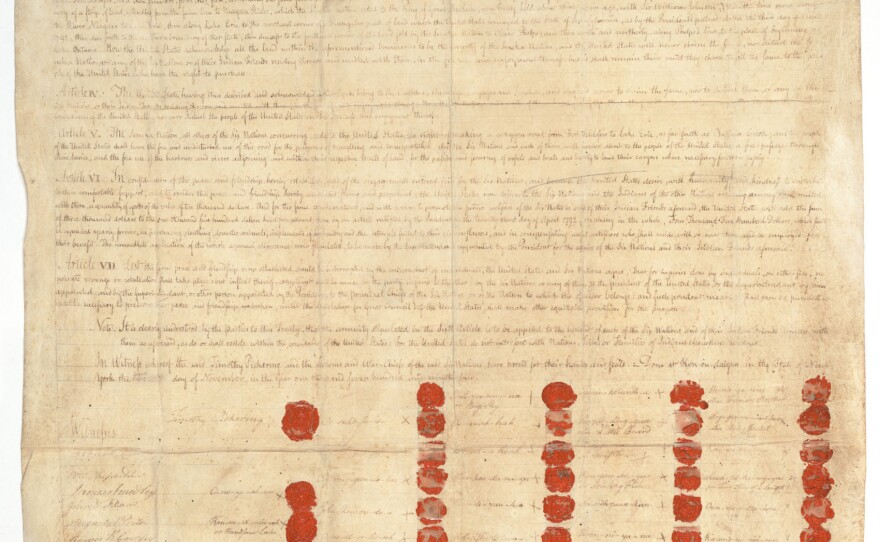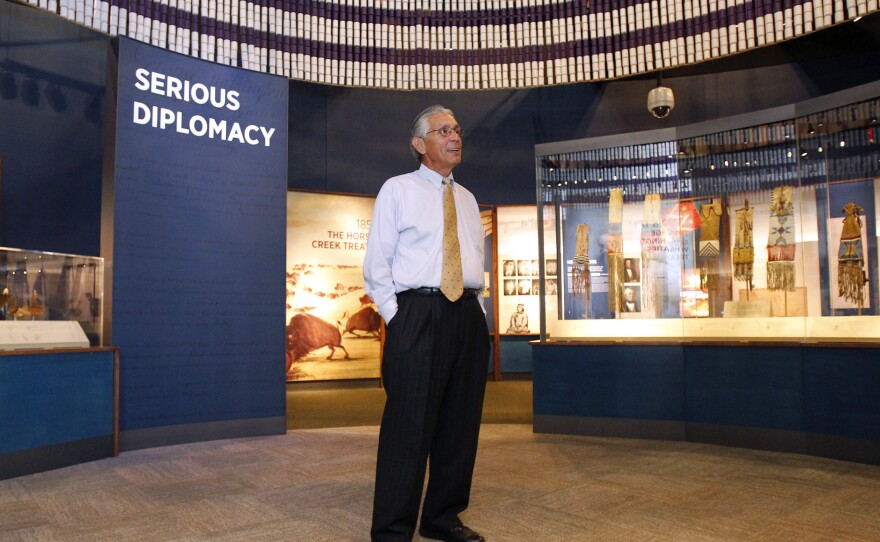


For centuries, treaties have defined the relationship between many Native American nations and the U.S. More than 370 ratified treaties have helped the U.S. expand its territory and led to many broken promises made to American Indians.
A rare exhibit of such treaties at the Smithsonian's National Museum of the American Indian in Washington, D.C., looks back at this history. It currently features one of the first compacts between the U.S. and Native American nations – the Treaty of Canandaigua.
Also known as the Pickering Treaty, the agreement was signed in 1794 between the federal government and the Haudenosaunee Confederacy, or the Six Nations, based in New York. The deal secured an ally for the young U.S. government after the Revolutionary War and returned more than a million acres to the Haudenosaunee. But their territory has been cut down over the years. More than two centuries later, the U.S. has kept one promise.
"Article 6 says that they will provide goods in the amount of $4,500, 'which shall be expended yearly forever,' " explains museum director Kevin Gover, a citizen of the Pawnee Nation of Oklahoma.
Every year, those goods from the U.S. government include bolts of cloth to distribute to tribal citizens. Haudenosaunee leaders have said that cloth is more important than money, because it's a way to remind the U.S. of the treaty terms, large and small.
"The physical treaty, like all things, will eventually fade," Gover says. "But that doesn't mean the commitments that were entered into are completed or are undone."
At least seven other original paper treaties will be featured in rotation at the museum before the exhibit "Nation to Nation" ends in the fall of 2018. For now, the documents not on display are kept at the National Archives, where one almost-forgotten treaty is stored underground.
The light-blue pages of Treaty K are signed without ratifying seals or ribbons — like 17 other unratified treaties signed by representatives of the U.S. government and Native American nations in California during the Gold Rush.
California lawmakers pressured the U.S. Senate not to ratify the treaties, which promised reservation land to the Native American nations. There was one reason the lawmakers didn't want the treaties, according to the exhibit's curator Suzan Shown Harjo of the Cheyenne and Hodulgee Muscogee Indian nations.
"The answer is always gold," she says. "And if it's not gold, it's silver. And if it's not silver, it's copper. And if it's not, go right through the metal chart."
Harjo says many American Indians in California suffered without treaty protection.
"They were not only scattered from their lands, and lots of people murdered during the Gold Rush, but they were erased from history," she explains.
While many treaties resulted in tragedies, Harjo says she hopes museum visitors will take away the full span of this diplomatic history.
"People always think of broken treaties and the bad paper and the bad acts, and that is our reality. But it didn't begin there. It began on an honorable footing," she says.
Anyone who wants a strong grounding in American history, Harjo adds, needs to understand the history of these treaties.
"The people who are citizens of the U.S., these are your treaties. They aren't just the Indians' treaties," she says. "No one gave us anything. No one was dragging any land behind them when they came here. This was our land."
Copyright 2015 NPR. To see more, visit http://www.npr.org/.






